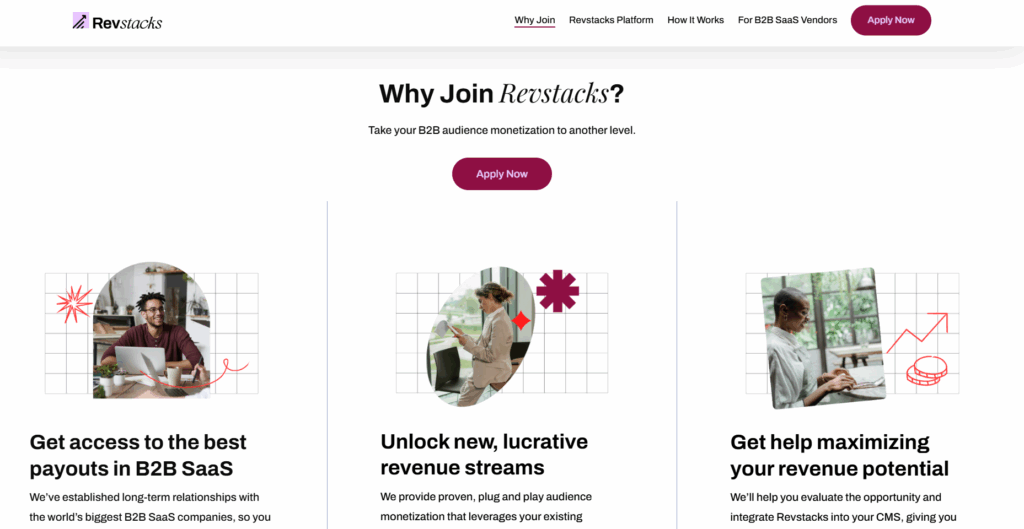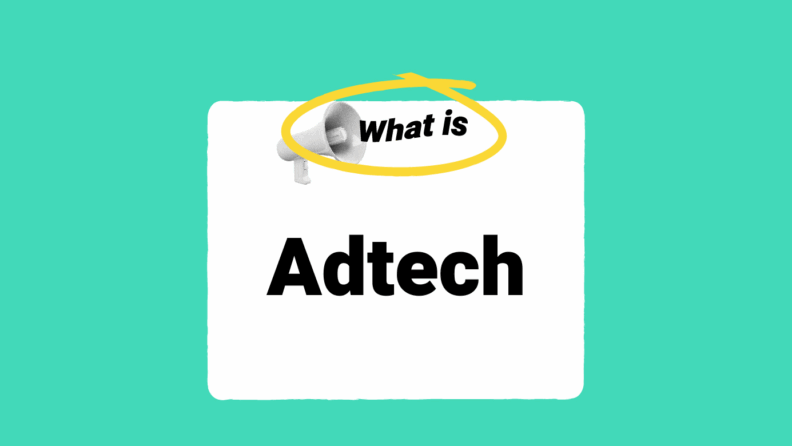If you run a digital publication like I do, you hear the word "adtech" tossed around constantly. When I first started, I’ll be honest: adtech sounded like just another complicated buzzword. But once I understood how it worked, it completely changed how I monetized my sites and scaled revenue.
If you’re just getting started or need a real-world explanation (not the jargon-filled stuff), here’s what you need to know.
What is Adtech?
Adtech, short for advertising technology, is a catch-all term for the tools, software, and platforms that help businesses plan, execute, manage, and measure digital advertising campaigns. It’s what powers the ads you see on websites, apps, social media—everywhere online.
From my experience, adtech is the "plumbing" behind the scenes. It makes sure the right ad shows up in front of the right person at the right time, without a human manually placing it there. It automates what used to be guesswork.
Why is Adtech Important?
In simple terms: without adtech, running profitable digital advertising would be nearly impossible today.
Adtech lets small publishers like me compete with the big players. It levels the playing field because I can tap into real-time bidding, data targeting, and sophisticated reporting, all without needing a giant ad sales team. It helps maximize revenue per pageview while keeping the user experience smooth (when done right).
Plus, advertisers love it because they can track where their money is going, target the right audiences, and optimize on the fly.

Types of Adtech
There’s a whole ecosystem of adtech tools, and they each serve different parts of the advertising process. Here are the big ones you’ll hear about:
1. Programmatic Advertising
This is a major piece of the adtech puzzle. Programmatic just means using automated systems to buy and sell ad space. Instead of humans negotiating deals, software handles it in real time, often in the milliseconds it takes a page to load.
For indie publishers like me, programmatic makes ad revenue scalable. I can monetize every impression, not just the ones I personally sold.
2. Demand-Side Platform (DSP)
A DSP is what advertisers use to buy ad inventory across multiple websites, apps, and platforms at once. They plug in their audience targeting, budget, and goals, and the DSP finds the best opportunities.
From my side as a publisher, I connect with these platforms through ad exchanges so that I can sell my available ad slots to the highest bidder automatically.
3. Supply-Side Platform (SSP)
On the flip side, SSPs are for publishers like me. They help manage, sell, and optimize my ad inventory across multiple buyers and exchanges.
An SSP makes sure I’m getting the best price for each ad slot without manually negotiating with every advertiser. Think of it as a high-powered auction house for your website’s ad spaces.
4. Agency Trading Desk (ATD)
ATDs are basically special units within big ad agencies that handle programmatic buys for clients. They work with DSPs to manage massive ad budgets and complex campaigns.
As an indie publisher, I don’t deal with ATDs much directly, but if I’m part of a premium ad network, some of the big brand deals might flow through these desks.
5. Ad Servers
Ad servers are the backbone. They deliver the actual ads to users’ screens, track impressions, and clicks, and sometimes manage who gets to see which ad at what time.
For me, ad servers are essential because they help me make sure my site’s ad placements are performing well, and that advertisers are getting what they paid for.
Benefits of Adtech
Why use adtech? Well, adtech comes with pros and cons, just like any other tool. Honestly, I struggle to think of why not to use adtech in today’s day and age. Advertising is your revenue generation mechanism, but your passion is the content. Why not outsource the PPC stuff to an adtech solution?
Still need convincing? Here are some benefits you can expect using adtech:
Increased Revenue
One of the most immediate impacts adtech had on my sites was revenue growth. Through real-time bidding (RTB) and header bidding setups, multiple advertisers can bid for the same impression at the same time. This competitive environment drives CPMs (cost per thousand impressions) up, often by 20–50% compared to old-school waterfall setups.
Before I leaned into adtech, I had a lot of under-monetized traffic. Now, almost every pageview is working harder for me, maximizing my total yield without me needing to manually sell inventory.
Better Targeting
Adtech platforms use advanced audience data (like demographics, interests, behaviors) to match ads to users more precisely. This means my readers see ads that are more relevant to them, which improves their experience and increases advertiser ROI.
For me, better targeting leads to higher click-through rates (CTR), better engagement metrics, and ultimately higher payouts. It’s a win-win: my audience isn't annoyed by irrelevant ads, and I get rewarded financially.
Efficiency
Before adtech, managing direct-sold ads was extremely labor-intensive. I'd be negotiating deals, inserting ad tags manually, chasing invoices. It was a full-time job in itself!
With adtech automating most of the heavy lifting, I can focus my time where it really matters: creating great content, growing my email lists, optimizing UX. I run a lean operation with fewer staff hours tied up in ad ops, which keeps margins healthy.
Transparency and Reporting
Good adtech platforms offer detailed, real-time reporting. I can see which partners are buying, what inventory is selling best, CPM trends, viewability scores, all at a granular level.
This transparency means I can spot problems early (like a sudden dip in fill rate) and optimize quickly. It also builds trust with advertisers because I can deliver real performance data instead of vague promises.
Improved User Experience
This might seem counterintuitive because we all know bad ads can wreck a site. But modern adtech, when set up properly, actually improves user experience. Through ad quality filters, creative review, and better load management (like lazy loading ads), I can control what kinds of ads show up and how they behave.
Cleaner ad experiences mean lower bounce rates, longer sessions, and higher loyalty, all of which support my growth and revenue goals in the long term.
Access to Premium Advertisers
Thanks to programmatic deals and private marketplaces (PMPs), I’m able to attract big-name advertisers, ones I could never land through cold emails alone. Brands want to buy at scale and with guaranteed quality signals (like brand-safe content and viewability rates).
By being plugged into the right adtech ecosystem, my relatively small publication can be included in premium buys alongside major media brands, which elevates both my revenue and my brand perception.
Risks of Adtech
To counterbalance my argument, I’ll also go over the potential risks of using adtech. You’ll probably be familiar with most of them, as they are risks of using any sort of advertising or affiliate mechanism these days.
Here are the risks of using adtech on your content platform:
Loss of audience trust
Display ads (especially low-quality programmatic ones) can erode trust. I’ve seen loyal readers bounce when we ran intrusive interstitials, autoplay videos, or “you won’t believe” style native ads. When monetization comes at the cost of experience, long-term loyalty suffers.
Poor user experience
Adtech can slow down page loads, increase bounce rates, and clutter an otherwise clean editorial design. I’ve spent hours debugging CLS (Cumulative Layout Shift) and core web vitals because of rogue ad scripts or bloated ad stacks.
Privacy and compliance risks
Using adtech means you're now handling third-party cookies, user tracking, and all the legal baggage that comes with it (think GDPR, CCPA). I’ve had to consult lawyers just to make sure consent banners and tracking disclosures were watertight.
Revenue cannibalization
Sometimes, adtech competes with your other revenue streams — like affiliate or sponsored content. I've had to pull back on ad placements when they started undercutting direct campaigns or distracting from high-intent CTAs.
Opaque supply chains
The adtech ecosystem is full of middlemen (SSPs, DSPs, exchanges) and it’s nearly impossible to trace where all the revenue is going. I’ve run audits that showed up to 50% of ad spend disappearing into the “unknown delta.”
Ad quality and brand safety
You’re not always in control of what gets served. I’ve had malware, scammy crypto ads, and even NSFW content slip into the stack. Unless you’ve got strong blocklists and a vigilant ad ops setup, you’re exposed.
Low revenue per user
Unless you’re working at scale, the CPMs just don’t justify the clutter. For smaller or niche publications like mine, I’ve often found it more effective to monetize via affiliates, memberships, or direct-sold inventory.
Technical debt and maintenance
Implementing and managing adtech means dealing with header bidding setups, ad server integrations, frequent script updates, and debugging broken ad slots. It’s a time and resource suck that never really ends.
When to use adtech?
Adtech isn’t evil, it’s just misunderstood. I’ve found that when used intentionally and with clear boundaries, it can be a useful revenue layer. But I never let it lead the business.
For me, adtech is a fit when it supports the overall content experience, respects the audience, and fills in gaps between other monetization channels like affiliates, courses, or sponsorships. It works best when you have some level of scale, clean site performance, and the operational capacity to manage vendors and troubleshoot issues.
If you're asking “Should I turn on ads?”, here’s what I look for first:
You’re getting consistent traffic: Adtech rarely pays off for low-traffic sites. I usually wait until we’re seeing 50,000+ sessions/month before layering it in.
Your content isn’t highly monetized elsewhere: If your pages don’t drive affiliate conversions, product sales, or sponsorships, ads can help fill the monetization gap.
You’ve optimized your page speed: Slow-loading sites are punished by both search engines and readers. Ad scripts will only make things worse if you’re already struggling with Core Web Vitals.
You have international traffic: If you’re global, even non-English audiences can monetize well with the right ad networks (I’ve seen decent CPMs from markets like Canada, Australia, and parts of Europe).
You can monitor performance regularly: Adtech isn’t “set it and forget it.” If you don’t have someone checking viewability, layout issues, and revenue per session, things can quietly go sideways.
You’ve already nailed content quality and UX: Ads shouldn’t be a band-aid for weak content or poor audience targeting. If your foundation is strong, adtech can sit on top without hurting the brand.
You have direct deals or premium placements available: If you’re in a niche, you might be able to command higher CPMs with direct-sold inventory or PMP (private marketplace) deals layered over your programmatic stack.
👉 Download my When to Use Adtech checklist here.
Adtech Providers
An adtech service provider is a company or platform that offers technology-based solutions to help businesses manage and optimize their digital advertising efforts. These services are designed to streamline the process of buying, selling, delivering, and analyzing online ads across different channels and devices.
🏢 Revstacks: Example of an Adtech Provider

What they do: Revstacks is a performance-focused adtech provider that specializes in user acquisition, ad revenue optimization, and first-party data management for ecommerce brands, publishers, and app developers.
Key features:
- User Acquisition: Helps brands grow their audience using advanced targeting and cross-platform campaigns.
- Revenue Optimization: Boosts ad revenue for publishers through smarter ad placements, yield management, and optimization techniques.
- First-Party Data Solutions: Enables businesses to better collect, manage, and activate their own user data without relying on third-party cookies.
- Analytics and Insights: Provides in-depth reporting to understand customer behavior and improve marketing performance.
Why it's used: Brands and publishers use Revstacks to scale their advertising results, maximize monetization opportunities, and build sustainable, data-driven marketing strategies in a privacy-first world.
Adtech FAQ
Here are some questions people also ask me about adtech (or forget to ask me and I think they should know anyway).
What is the difference between adtech and martech?
People mix these two up all the time, but they’re not the same.
Adtech is all about acquiring customers, using paid ads to drive traffic, leads, or sales. It's transactional and campaign-focused.
Martech (short for marketing technology) is about managing and nurturing customer relationships, think email marketing, CRM tools, content marketing platforms. It's more about building long-term engagement.
In my business, I use adtech to monetize and bring new people into my ecosystem. I use martech to build relationships with my audience through newsletters, membership programs, and personalized content.
What are the main channels used in digital adtech strategies today?
Today's digital adtech strategies span a variety of channels, including ad campaigns across online advertising networks, ad buying for real-time placements, and monitoring ad impressions to measure reach. Channels like digital ads and video ads are critical for capturing audience attention, while connected TV and digital out-of home advertising expand digital reach into new spaces.
Major platforms like Google Ads and Amazon also play key roles, enabling businesses to extend their visibility across devices, including mobile apps. Adtech solutions make it possible to optimize performance across all these diverse touchpoints.
How does adtech help brands target audience segments more effectively?
Adtech revolutionizes audience targeting by enabling brands to tap into detailed audience segments and target audiences based on real-time data. With the rise of first-party data collection, brands can personalize campaigns using insights directly from their own customers.
Managing customer data accurately allows marketers to build meaningful connections, serve relevant ads, and create better user experiences. These capabilities allow advertisers to move beyond broad demographic targeting and deliver hyper-relevant messages at every stage of the customer journey.
How do data management platforms (DMPs) support adtech strategies?
Data management platforms (DMPs) are a cornerstone of adtech, helping brands gather, organize, and activate data for smarter marketing. A DMP integrates various sources of customer data to create comprehensive audience profiles. It also plays a critical role in attribution, allowing marketers to track how ads contribute to conversions across different channels.
Analyzing campaign performance becomes far more precise with DMPs, leading to better insights and more optimized media spend. These tools are essential for executing data-driven advertising strategies effectively.
What role do automation and machine learning play in modern adtech?
Automation and machine learning are at the heart of modern adtech, driving efficiency and innovation across the board. They streamline processes like media buying, bid optimization, and real-time personalization. Algorithms power predictive analytics, determining the best times, channels, and formats for ad placements.
Adtech solutions also help brands streamline campaign management, reducing manual effort and human error. These technologies ensure ads are not only served faster but also perform better, making them indispensable in today's digital marketing landscape.
How do marketing strategies adapt to the digital adtech environment?
In the adtech-driven world, marketing strategies are becoming more data-centric and dynamic. Brands use digital marketing techniques like cross-channel attribution and customer journey mapping to refine their messaging. Formats for ads are constantly evolving, from static banners to interactive rich media, fueled by audience preferences and behavior insights.
Media buying has shifted to automated platforms that enable real-time bidding and personalization. Providers of adtech solutions offer brands the tools they need to measure ROI more accurately, personalize experiences, and continuously optimize campaigns across all digital touchpoints.
What Next?
Subscribe to the Indie Media Podcast for insights from digital publishing experts and growth hackers across niches like travel & tourism, health & fitness, project management, SEO & marketing, and more.


